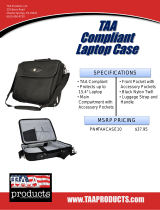Back to Contents Page
Flashing the BIOS
Dell™Latitude™E4200ServiceManual
Flashing the BIOS From a CD
Flashing the BIOS From the Hard Drive
Flashing the BIOS From a USB Key
If a BIOS-update program CD is provided with a new system board, flash the BIOS from the CD. If you do not have a BIOS-update program CD, flash the BIOS
from the hard drive.
Flashing the BIOS From a CD
1. Ensure that the AC adapter is plugged in and that the main battery is installed properly.
2. Press <F12> before inserting the BIOS-update program CD so that you can set up the computer to boot from a CD for one time only. Otherwise, you
must enter the system setup program to change the default boot order.
3. Insert the BIOS-update program CD, and turn on the computer.
Follow the instructions that appear on the screen. The computer continues to boot and updates the new BIOS. When the flash update is complete, the
computer will automatically reboot.
4. Remove the flash BIOS update program CD from the drive.
Flashing the BIOS From the Hard Drive
1. Ensure that the AC adapter is plugged in, the main battery is properly installed, and a network cable is attached.
2. Turn on the computer.
3. Locate the latest BIOS update file for your computer at support.dell.com.
4. Click Download Now to download the file.
5. If the Export Compliance Disclaimer window appears, click Yes, I Accept this Agreement.
The File Download window appears.
6. Click Save this program to disk, and then click OK.
The Save In window appears.
7. Click the down arrow to view the Save In menu, select Desktop, and then click Save.
The file downloads to your desktop.
8. Click Close if the Download Complete window appears.
NOTICE: If you are replacing the system board, make sure the correct SATA mode is selected in the system setup program. All replacement
system boards for your computer have the SATA operation set to IRRT mode by default. If you have installed or deployed an image in a different
SATA mode (ATA or AHCI), there is a risk of data loss upon boot, which may require you to reinstall the operating system. For more information
onsettingtheSATAmodeinthesystemsetupprogram,seetheDell™TechnologyGuideonyourcomputeroratsupport.dell.com.






















